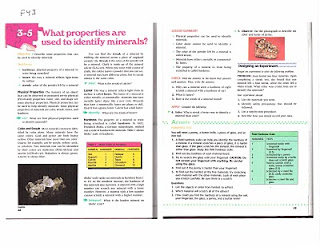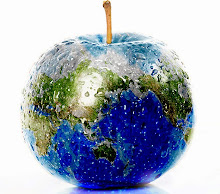Students will be able to:
use information from textbooks and classroom discussions to
-take an exam of energy/force and motion.
Students submitted their Rube Goldberg designs.
Students received a make-up exam for energy/force and motion. They used texts to find answers. Tomorrow, they will use the CPS clicker system to enter their answers. The exam will substitute for one failed exam this grading period.
Tomorrow, notebooks are due. Be sure you have written up labs 7 on Work, Force, and Distance and lab 8 on Electromagnetic Waves. Also, be sure your parent or guardian has written what you taught them on page M, the last section of the adult input form.
The questions for the exam are:
Extra Credit Exam Second Grading Period
Multiple Choice
Identify the choice that best completes the statement or answers the question.
____ 1. The ability to do work is called
a. velocity.
b. energy.
c. conversion.
d. friction.
____ 2. Energy is measured in units called
a. joules.
b. pounds.
c. meters.
d. horsepower.
____ 3. The energy associated with motion is called
a. kinetic energy.
b. elastic potential energy.
c. gravitational potential energy.
d. nuclear energy.
____ 4. Kinetic energy increases as
a. mass increases and velocity decreases.
b. mass decreases and velocity increases.
c. both mass and velocity increase.
d. both mass and velocity decrease.
____ 5. The total potential and kinetic energy of the particles in an object is called
a. mechanical energy.
b. thermal energy.
c. chemical energy.
d. electrical energy.
____ 6. An example of something that stores chemical energy is
a. lightning.
b. a microwave.
c. a match.
d. light.
____ 7. Which of the following has kinetic energy?
a. a rock poised for a fall
b. an archer’s bow that is drawn back
c. a rolling bowling ball
d. a car waiting at a red light
____ 8. Unlike kinetic energy, potential energy is
a. energy of motion.
b. stored.
c. conserved.
d. not measurable.
____ 9. Potential energy that depends on height is called
a. kinetic energy.
b. gravitational potential energy.
c. elastic potential energy.
d. mechanical energy.
____ 10. Energy stored in the nucleus of an atom is called
a. electromagnetic energy.
b. nuclear energy.
c. mechanical energy.
d. chemical energy.
____ 11. The tendency of an object to resist change in its motion is known as
a. mass.
b. inertia.
c. force.
d. balance.
____ 12. The force of gravity on a person or object on the surface of a planet is called
a. mass.
b. terminal velocity.
c. weight.
d. free fall.
____ 13. The force that one surface exerts on another when the two rub against each other is called
a. friction.
b. acceleration.
c. inertia.
d. gravity.
____ 14. Air resistance is a type of
a. motion.
b. acceleration.
c. velocity.
d. friction.
____ 15. The product of an object’s mass and velocity is called its
a. inertia.
b. momentum.
c. acceleration.
d. force.
____ 16. The achievement of lifting a rocket off the ground and into space can be explained by
a. Newton’s first law.
b. Newton’s second law.
c. Newton’s third law.
d. the law of conservation of momentum.
____ 17. The amount of matter in an object is called its
a. inertia.
b. mass.
c. force.
d. balance.
____ 18. Which of the following is an example of increasing friction intentionally?
a. waxing skis
b. adding grease to gears on a bike
c. throwing sand on an icy driveway
d. oiling a squeaky door
____ 19. Speed equals distance divided by
a. time.
b. velocity.
c. size.
d. motion.
____ 20. When you know both the speed and direction of an object’s motion, you know the
a. average speed of the object.
b. acceleration of the object.
c. distance the object has traveled.
d. velocity of the object.
____ 21. You can show the motion of an object on a line graph in which you plot distance against
a. velocity.
b. time.
c. speed.
d. direction.
____ 22. If one of Earth’s plates moves 5 centimeters every year, how far will it move in 500 years?
a. 25 kilometers
b. 25 centimeters
c. 25 meters
d. 250 meters
____ 23. How many different forms, or states, does most matter on Earth exist in?
a. one
b. two
c. three
d. fifty
____ 24. The temperature at which a solid changes into a liquid is called
a. the boiling point.
b. the freezing point.
c. the melting point.
d. absolute zero.
____ 25. Water freezes at 32 degrees on which temperature scale?
a. Fahrenheit
b. Celsius
c. Kelvin
d. absolute zero
____ 26. What do machines do?
a. change the amount of force you exert or the distance over which you exert the force
b. increase the amount of work that is done
c. decrease the amount of work that is done
d. eliminate friction
____ 27. Pulling down on a rope to hoist a sail on a sailboat is an example of a machine
a. multiplying the force you exert.
b. multiplying the distance over which a force is exerted.
c. changing the direction over which a force is exerted.
d. reducing friction.
____ 28. The mechanical advantage of a machine is the number of times a machine increases
a. the distance an object is moved.
b. the amount of friction.
c. the change in direction.
d. the force exerted on the machine.
____ 29. Without friction there would be
a. less machine efficiency.
b. greater output work than input work.
c. greater input work than output work.
d. equal input and output work.
____ 30. An ideal machine would have an efficiency of
a. 1 percent.
b. 10 percent.
c. 50 percent.
d. 100 percent.
















